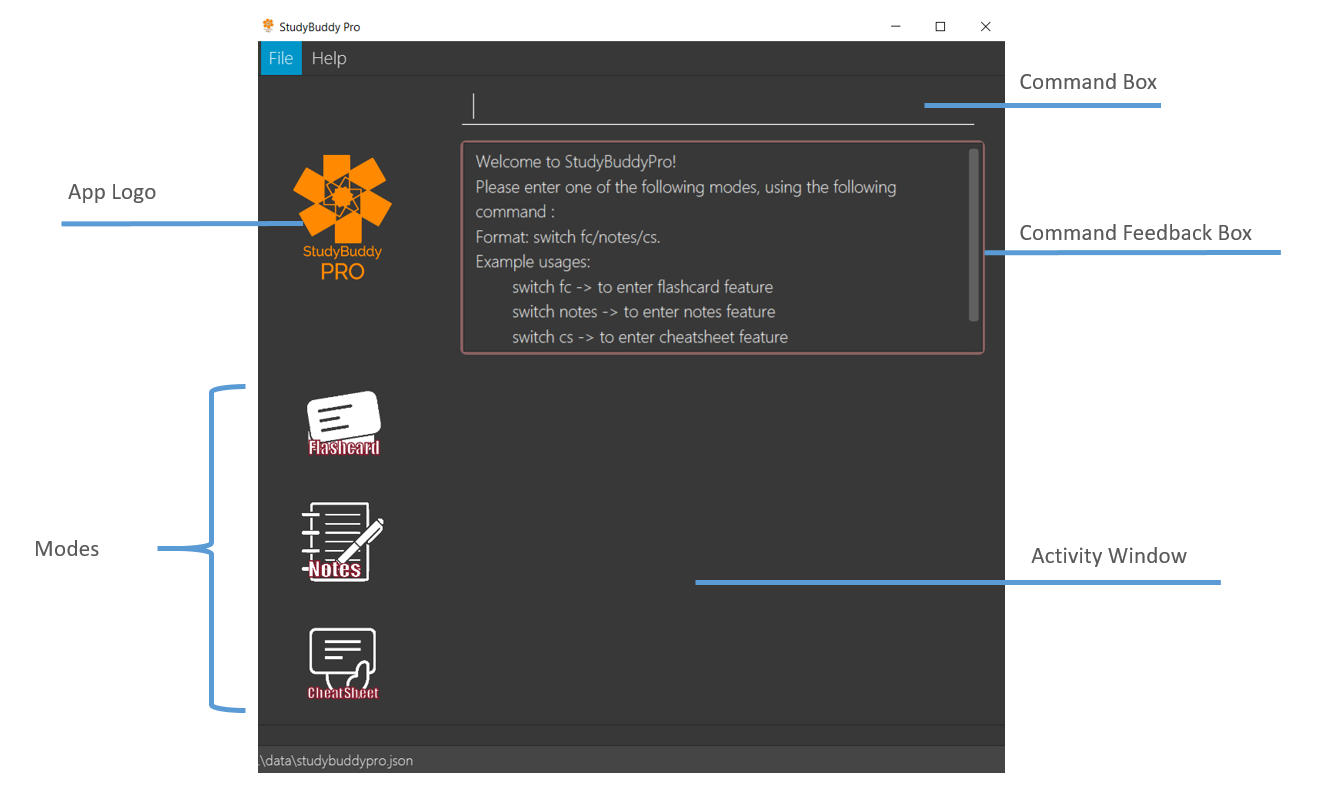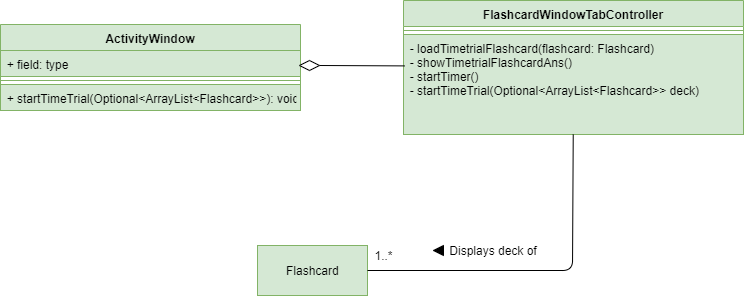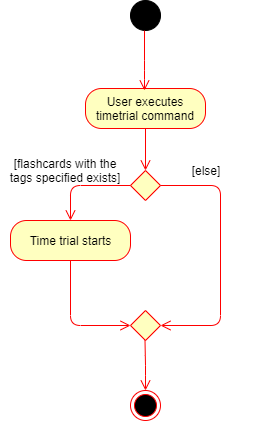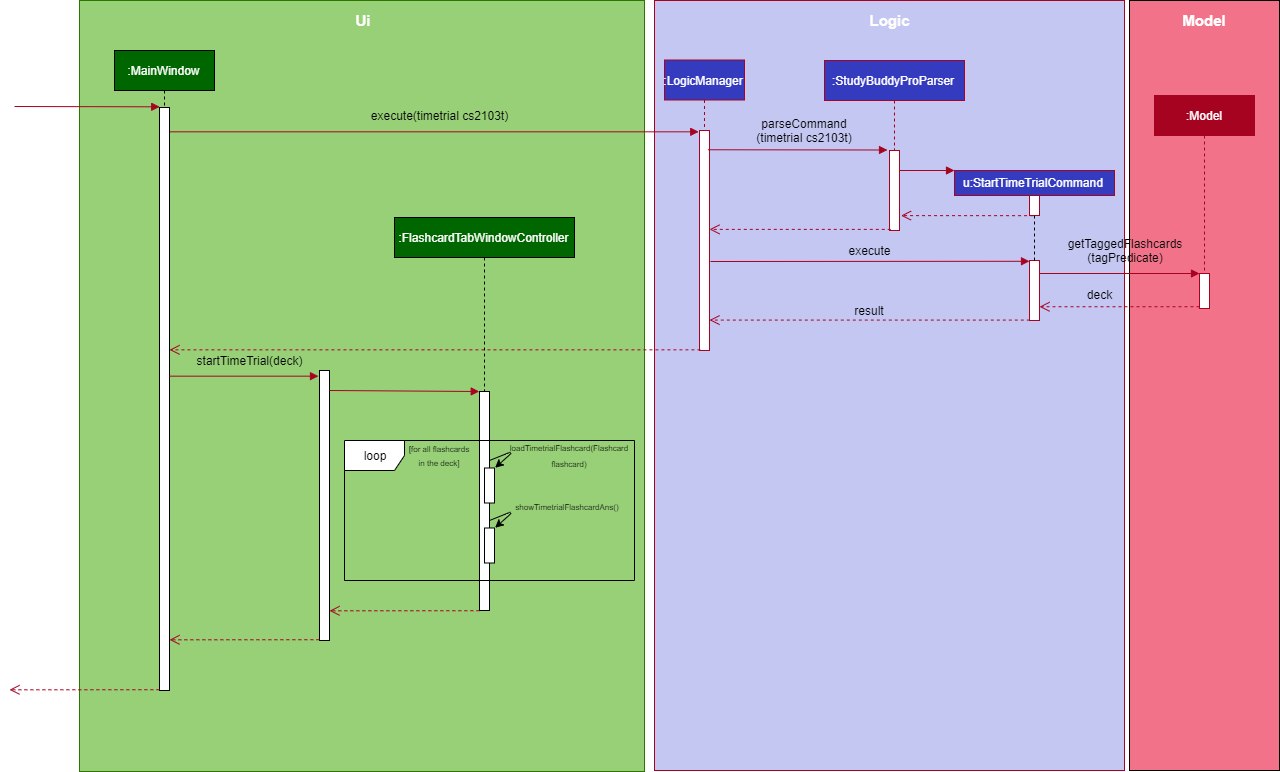About The Project
My team of 4 Computer Science students and I were tasked with enhancing a basic command line interface desktop address book application for our CS2103T module, and we chose to modify it into a 3-in-1 application that serves as a tool to aid revision called StudyBuddy. This application allows students to store and utilize flashcards, create notes that can be later used to generate a reference to create a cheat sheet.
This is what our project looks like:

Figure 1. The graphical user interface for StudyBuddyPro.
Syntax
Please do take a look at the syntax notations below as they are used throughout the document.
syntax 1 — For commands or class objects
syntax 2 — For figures, tables, functionality or variables
Callouts Signs
Please do refer to the signs below as they are used throughout the document.
|
Indicates information that are to be adhere as potential problems may be encountered if you are not careful. |
|
Indicates information that are crucial to understand so that you will be able to follow the flow of the document. |
|
Indicates information that are note-worthy. Do read them for more information and better understandings. |
Summary of contributions
-
Major enhancement: added ability to start a time trial of flashcards.
-
What it does: The
timetrialcommand initializes a test whereby the user will be tested a sequence of flashcards. -
Justification: Pushes the user to test his understanding / familiarity of a certain topic.
-
Highlights: This enhancement works with existing as well as future commands. An in-depth analysis of design alternatives was necessary to implement the feature in a way that doesn’t disrupt other features. The implementation was also challenging because there was a need to read up on an existing API that I did not have prior experience in.
-
Credits: Usage of the timeline api and linking the timer to a label was inspired by: https://asgteach.com/2011/10/javafx-animation-and-binding-simple-countdown-timer-2/
-
-
Minor enhancement: Designed the overall GUI of the StudyBuddyPro application.
-
Code contributed: [Functional code]
-
Other contributions:
-
Project management:
-
Facilitated discussion of the overall direction of the application in v1.1.
-
-
Developing existing features:
-
Enhancements to existing features:
-
Documentation:
-
Added the command summary for the team(#338).
-
-
Community:
-
Reported bugs and offered suggestions for the other team during the Practical Exam dry run.
-
Contributions to the User Guide
Given below are sections I contributed to the User Guide. They showcase my ability to write documentation targeting end-users. |
Time Trial: timetrial
Starts a time trial for flashcards with specified tags <TAG>.
Format: timetrial TAG...
Example usage: timetrial cs2103tuml hard
Expected output: Time trial started
All of the flashcards containing the specified tags will be then displayed sequentially in the activity below.
-
At least one tag must be specified.
-
If more than one tag is specified, selects all flashcards that contains all of the specified tags.
-
Default <TIME> will be 5 seconds.
-
Answer will be flashed for 3 seconds.
-
If a flashcard command (other than
show) is inputted during the time trial, the time trial will be terminated and the inputted command will be executed. -
Executing
showwill reveal the answer of the flashcard in advance, but will not terminate the time trial.
Command Summary
Global Commands (Can be executed in any mode)
-
Switch :
switch MODE
e.gswitch fc -
Filter All :
filterall tag/TAG…
e.gfilterall tag/cs2103tuml tag/difficult -
List tags :
taglist -
Help :
help -
List :
list -
Exit :
exit
Flashcard Commands
-
Add :
add q/QUESTION a/ANSWER t/TITLE [tag/TAG]…
e.g.add q/What is 100 Binary in its Decimal form? a/4 t/Binary Stuff tag/CS2100 -
Delete :
delete INDEXe.gdelete 1 -
Filter :
filter tag/TAG…
e.gfilter cs2103tuml -
Time Trial :
timetrial TAG…
e.gtimetrial cs2103t uml -
View :
view INDEX
e.gview 1 -
List :
list -
Show :
show -
Remind :
remind
Note Commands
-
Add :
add t/TITLE c/CONTENT tag/TAG…
e.g.add t/Pipelining Definition c/Pipelining is a process where a processor executes multiple processes simultaneously. tag/cs2100 -
Delete :
delete INDEXe.gdelete 1 -
View :
view INDEX
e.gview 1 -
Viewing a raw note :
viewraw INDEX
e.gviewraw 3 -
Filter :
filter tag/TAG…
e.gfilter tag/hard tag/cs2100 -
List :
list
CheatSheet Commands
-
Add :
add t/TITLE [tag/TAG]…
e.g.add t/CS2100 Midterm CheatSheet tag/cs2100midterm -
Delete :
delete INDEXe.gdelete 1 -
Edit :
edit INDEX t/TITLE tag/TAG…
e.gedit 8 t/cs2100 final cheatsheet tag/formula -
Show :
show INDEX
e.gshow 4 -
View :
view INDEX
e.gview 1 -
Filter :
filter tag/TAG…
e.gfilter tag/hard tag/cs2100 -
List :
list
Contributions to the Developer Guide
Given below are sections I contributed to the Developer Guide. They showcase my ability to write technical documentation and the technical depth of my contributions to the project. |
Flashcards Time Trial Feature
| The following commands assume that the user is in the flashcard mode. |
Implementation
-
The time trial mechanism is facilitated by the
FlashcardTabWindowController, and mainly uses theTimeline,KeyFrameandKeyValueclass from the JavaFX package to support its functionality.The following figure shows a class diagram of the relevant classes of the time trial feature.
 Figure 1. Class diagram when the timetrial command is executed
Figure 1. Class diagram when the timetrial command is executed
The following figure is an activity diagram of the flow of events when a user attempts to start a time trial.

-
Given below is an example usage scenario and how the time trial mechanism behaves at each step.
-
Upon initialization of the StudyBuddy and switching to the Flashcard window, the
StudyBuddyParser’s function enum will be set to parseFlashcardcommands. -
The user executes (timetrial cs2100), and the
StartTimeTrialCommandretrieves a List of flashcards with the associatedTagthrough theModel#getTaggedFlashcards, which is then passed into theFlashcardTabWindowController. -
The
FlashcardTabWindowControllerthen calls theFlashcardTabWindowController#startTimeTrial, which in turns construct aTimelinewith the following added for 3 flashcards:-
A
KeyFrameto call theFlashcardTabWindowController#loadTimeTrialmethod, which displays the question of the flashcard on the window, with aKeyValuethat starts the timer on the screen. -
A
KeyFrameto call theFlashcardTabWindowController#showFlashcardAnsmethod, which hides the Timer and flashes the answer of the flashcard for a set period of time. -
A
KeyFrameis then added to the timeline to call theFlashcardTabWindowController#resetViewsmethod, which in turn empties the qnsTextArea and ansTextArea. [TO BE REFORMATTED]
-
The following figure shows the sequence diagram of when the command timetrial cs2103t is executed:

The following figure is an activity diagram that summarizes the flow of events when a user attempts to start a time trial as described above:

Design Considerations
Aspect: How the timetrial is implemented
-
Alternative 1 (current choice): 1. Using the
TimeLineclass to set the timer object.-
Pros: Tidier and easier to understand.
-
Cons: Have to read up on the API and learn about the relevant classes such as
KeyFrameandKeyValue
-
-
Alternative 2: Looping
Thread.sleep()to set the timer-
Pros: Easier to implement
-
Cons: Code will be messier and harder to read
-
Aspect: How to continue the time trial
-
Alternative 1 (current choice): Each flashcard and its’ respective answer is displayed for a set period of time before the next flashcard
-
Pros: Easier to implement
-
Cons: Inflexible as user can only view the answer for a set amount of time
-
-
Alternative 2: Allowing users to input commands to display the flashcard answer / move on to the next flashcard
-
Pros: Better flow of time trial feature and improved user experience
-
Cons: Hard to implement
-
[Proposed] Future improvements
-
Allowing users to set their own time limit for each flashcard in the time trial mode
-
Command will be inputted to set the duration of the timer for each flashcard
-
-
Allowing users to decide when to move on to the next flashcard
-
Question will still be shown for a fixed period of time, but a command will be required to move on to the next flashcard instead of just flashing the answer for a set amount of time
-
Testing timetrial command
|
The following commands have been provided for ease of testing and can be inputted to test some of the test cases:
|
-
Test case 1
-
Prerequisites
-
Currently in flashcard mode with the Flashcard icon highlighted.
-
There exist flashcards with the tags that you would like to specify.
-
-
Input command:
timetrial [tag] -
Expected:
-
Feedback box outputs:
Time trial started
-
The question of the flashcard is displayed together with a timer for 5 seconds.
-
Once the time hits 0, the answer is flashed for 3 seconds.
-
Repeat 2 and 3 until all of the flashcards of the specified tags have been displayed.
-
-
-
Test case 2
-
Prerequisites
-
Currently in flashcard mode with the Flashcard icon highlighted.
-
There exist flashcards with the tags that you would like to specify.
-
-
Input command:
timetrial [tag]. -
Input command:
show. -
Expected:
-
Feedback box outputs:
Flashcard answer loaded
-
The answer of the flashcard is loaded, and after a while the time trial continues until all the flashcards have been loaded.
-
-
-
Test case 3
-
Prerequisites
-
Currently in flashcard mode with the Flashcard icon highlighted.
-
There exist flashcards with the tags that you would like to specify.
-
-
Input command:
timetrial [tag]. -
Input command:
view 3(Can be any other flashcard comamand). -
Expected:
-
Feedback box outputs:
Viewing flashcard: Title: (Flashcard title) Tags: [tags]
-
Time trial does not continue and the latest command inputted is executed.
-
-
-
Test case 4
-
Prerequisites
-
Currently in flashcard mode with the Flashcard icon highlighted.
-
There are no flashcards with the tags that you would like to specify.
-
-
Input command:
timetrial [tag]. -
Expected:
-
Feedback box outputs:
There are no flashcards with the tags specified!
-
-